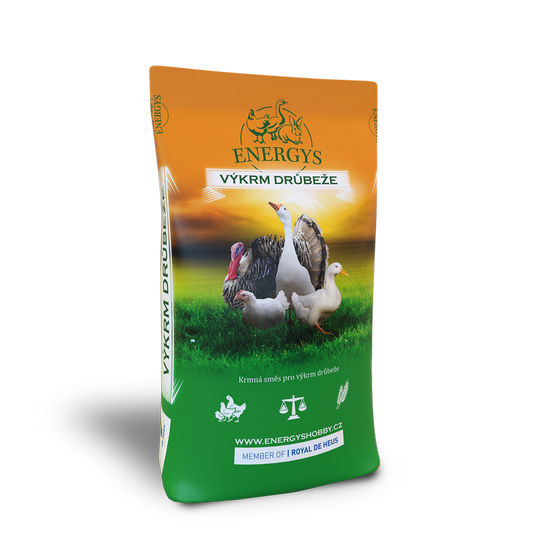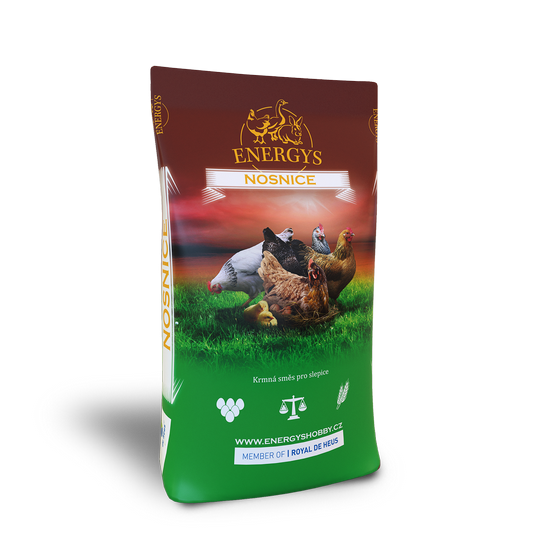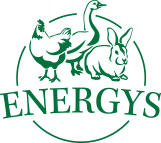Rabbits
Poultry
Laying hens
Quails
Guinea pigs
Pigs
Ostriches
Sheep and goats
Pigeons
Pheasants
Forest animals
Keeping chickens
People who have at least the minimum conditions for it, are now deciding to contribute to a healthier diet by producing their own plant and even animal products. Home-produced eggs are the most frequent animal products produced at home. This raises the question: How to do it?
With regard to production of eggs for eating, these are usually eggs from chickens, duck eggs are consumed very rarely here. If we decide to start raising chickens, we should determine the method.
This presumes that we do not have anything satisfactory for keeping chickens in.
Coop
A modern coop should be spacious and airy, the height should be sufficient to allow the breeder to care for the poultry, clean, remove soiled bedding and lay down new bedding without having to bend when entering and working in the coop. It can be constructed from solid building materials, or boards. Boards should have a groove and tongue, so that no gaps appear as the material dries. Gaps would let in drafts of cold air during the winter months. It is probably quickest to build a henhouse using OSB panels and studs. It is not the purpose of this article to describe the building procedure. There are plenty of various ready-built coops and building instructions available on the internet. The coop needs a window at the side, and I would also recommend a roof window made from polycarbonate.
Roosting
Install the perches – roosts on which the hens will sleep at night, at a height of about 120 cm. You should also provide the hens with a ladder to reach the perches. The perches should be replaced or cleaned regularly and should be installed in sockets from which they can be easily removed and replaced. I recommend that the doors to the coop be made with a standard door fame of a width of 80 cm, so that you can easily push a wheelbarrow through it.
The aviary should be connected to the coop and the hens enter it through the coop door, or through the opening at the bottom of the door when the weather is cold. The aviary should have a roof to protect the poultry against predators such as martens, weasels, foxes or even cats or birds of prey such as goshawks, sparrowhawks or even owls. This also prevents the equipment in the aviary from getting wet or damp when it rains or snows. The netting should have 16 x 16 mm eyes, but smaller eyes, e.g. 10 x 10 mm, also prevent mice and rats from entering, particularly if the floor of the aviary and coop are made from concrete. Choose the size of the aviary depending in on the number of hens. It should be big enough, particularly if the hens cannot be let out to roam in a grassy garden. If the coop and aviary have a concrete floor, this should be covered with bedding. Shavings, straw, hay and bark mulch are all suitable. Sawdust is not as good because it produces dust.
A skillful breeder can make a chicken feeder himself from wood or plywood. However, the metal feeders sold in specialized shops are more suitable. Their advantage is that they are easy to keep clean and they can be washed properly if soiled. They also have a screen, which prevents the birds from scratching the feed out of it and each hen can easily choose one compartment from which it obtains its daily amount of feed. The feeder should ideally be placed at a height level with the chicken’s back, which prevents wastage of feed by scratching and soiling.
A sufficiently large metal or plastic container can be used as a drinker. However, a bucket drinker can also be purchased. This prevents the hens from soiling the water with their feet, it keeps the water clean for longer, because the hens can only soil it by dipping their beaks in it.
A box, which we fill with sifted grit or purchased grit for poultry or pigeons, can serve as a grit hopper. You can also add crushed dried eggshells to the grit. A place where the hens can scratch or dust bathe is also important, especially if they are kept in an enclosed area. Make this out of a box that is about 60 x 60 x 15 cm (l x w x h), and fill it with sand, possibly with some wood ash mixed in. The hens will use it for dust baths and scratching when they cannot be let out into the aviary.
Droppings tray
The breeder makes a droppings tray to fit below the perches, on which the hens perch at night, or rest during the day. A 15 cm high frame made from wood boards is placed in the area below the perches. Wire netting with eyes approximately 7 x 7 cm is attached to this frame. The droppings will fall through the netting and the hens will not be able to reach them. This prevents the hens from coming into contact with the droppings produced overnight. The droppings tray is lifted and the droppings removed with the bedding to the dung heap when the floor is cleaned.
How many hens?
Sufficient space in the coop is a key condition for keeping your hens in good health and maintaining high production. For small flock breeders, 1 m2 of floor space in the coop is enough for a maximum of 3 large hens or 5 small hens (Malík, V., 1991). This means that if you have a coop that is 3 x 2 m, you can keep up to 18 layers in it, the adjoining aviary should be twice as big. I would personally choose to keep fewer hens, ten layers and one cock if I wanted to produce fertile eggs and hatch chicks. But this is a topic for another article.
Nest boxes
It is recommended that nest boxes for hens are (width x height x depth) 350 x 400 x 400 cm (Malík, V., 1991). These can be placed in up to three rows above each other. Enough space for laying allows you to collect eggs with a clean shell and uninfected content. One nest can be used for laying by three hens. If you do not want to make a nest box yourself, you can purchase one over the internet. There are many types for sale and also instructions for making nest boxes available.
Feeding
Hens are omnivores, they mostly eat a plant diet, but their diet must include vegetable and animal components. Layers have strict requirements for the amounts of all nutrients. Hens are usually fed a mixture of grain, oil seeds and legumes. Grains include wheat, rye, corn and hulled oats, particularly if the breeder produces these grains himself. You must make sure that the hens get the right proportion of nitrogenous elements, oils, carbohydrates, fibre and other components, including trace elements, and supplement the crushed mixture of grains with a protein concentrate, for instance Energys HYDINA UNI 30 general purpose concentrate for fattening all categories of poultry, which contains soya of the highest quality. This is mixed with grain at a ratio of 20 – 40% (depending on breed or phase of fattening). It contributes towards rapid growth and increased meat production.
In today’s world, it is simplest to feed hens using manufactured complete feed mixtures. These contain a balanced proportion of nutrients. Energys Nosnice Gold pellets ensure that the hens lay a high number of eggs with a strong shell. The loose mixed feed called Energys Nosnice Klasik also promotes laying. Breeders of breeding chickens appreciate the Energys Repro complete mixture for layers promoting increased hatching rates and successful embryo development.
Where to obtain a hen?
There are many options. If you want a specific purebred hen, you can search the adverts in specialty newspapers and on advertising portals. If you want a good layer, you can choose one of the commercial laying hybrids and raise layers from chicks, or purchase older layers aged around 6 weeks. Farms also discard layers after the first year of laying. These are laying hens, which can lay a satisfactory number of eggs for another year or two, after they have moulted and adapted to the new, natural environment they are kept in. The breeder can then discard the hens and purchase new ones, or have a new flock ready to replace the old flock. Hens can live to ten or more years if they are cared for properly. However, they cannot be expected to be very productive at this age. Breeders usually discard hens after their second year laying.
Eating eggs
Chickens quite often eat their own eggs. This bad habit can originate if a hen lays eggs with a soft shell, or without a shell, with just an egg membrane. The egg cracks and runs out. The hens taste it and become used to the taste. They will gradually start to look for such eggs and may even start eating eggs with a hard shell. Hens may start laying eggs with a soft shell if they do not have enough calcium in their grit. This phenomenon should not occur if they are fed a complete mixed feed. Housewives sometimes cause this habit if they feed their chickens fresh eggshells. The hens enjoy the remaining egg white and gradually start to want it more and more, until they start eating the laid eggs in the nest box. Eggshells should be washed, dried and crushed. They are then an ideal source of calcium, which the hen uses to create more eggs.
Hens in the winter
Hens will easily tolerate our Central European winter in a coop, as described in this article. Breeds of hen with a rose comb are more tolerant of freezing temperatures than hens with a single comb. Chickens with large single comb, for instance Minorca, Leghorn and others, are prone to frostbite in their combs. If freezing temperatures are expected you must apply table oil or the well-proven Indulona hand cream to the combs and wattles of hens and cocks.
Production of droppings and their disposal
One hen produces 175 – 180 g of droppings a day, this is approximately 65 kg a year. The bedding taken to the dung heap during regular emptying of the droppings tray and cleaning the floor of the coop and aviary, must be added to this amount. If you have ten hens, they could produce at least 1,000 kg of manure a year. This means that you should reserve a place for a manure heap, if possible enclosed by pallets for instance. Composting of poultry manure with bedding can be accelerated by applying special bacteria and enzymes for liquidation of biological waste, and also by adding California earthworms The manure can be converted to compost within three months. This compost is suitable for garden fertilization.
Related posts
8. April 2025
Breeders raising hens for egg production naturally want them to produce as many eggs as possible while keeping costs low. For this purpose, commercial breeders exclusively use specially-bred hybrid layer hens created by crossing different genetic lines of pure breeds. These hybrid breeds carry in their genetic information the desired traits such as a high…
19. June 2024
The domestic chicken, or hen, is one of the most important farm animals and provides benefits in the form of eggs and meat. Today, more and more emphasis is being placed on animal welfare. As a result, farmers are already starting to prepare for mandatory changes to the housing of laying hens. The following article…
19. February 2024
The popularity of raising chickens in household conditions has been rising in recent years. This trend may be due to several factors, one of these surely being the search of high-quality foods, a more sustainable lifestyle and desire for greater independence. Breeding chickens at home also allows owners to control the animals’ living conditions and…
26. October 2022
Chickens are the most numerous bird species ever, with 26 billion breeding representatives. Unsurprisingly, they are divided into several groups according to different aspects. Which division is the most common, and which breeds of hens should you definitely be familiar with?
3. October 2022
When keeping chickens, one may wonder how long a hen actually lives. There is no clear answer to this question. It always depends on several factors – some you can influence, some unfortunately you cannot. How can you contribute to the long life of your hens and how does the life of a fowl work?
Related products

POULTRY UNI 30
A mashed concentrate for fattening of all categories of poultry, which includes the highest quality soja. It is mixed with cereals in a ratio of 20-40% (by type or phase of fattening). It contributes to fast growth and a high meat content. It does not contain coccidiostats.

LAYER REPRO
Granulated feed for laying hen breeds. Supports higher hatching rates and the successful development of the embryo. Higher content of chosen substances). The laying hen must have access to an adequate amount of potable water.

LAYER GOLD
Granulated feed for laying hens when laying. Supports high laying eggs with a solid shell and a beautiful yolk color. It follows the feeding of the Chicken MIDI mixture. Indicative feed consumption per 1 year ranges from 50-60 kg / piece.

LAYER KLASIK
A powered feeding mix intended for laying hens. With its rough shredded structure it contributes to maximum usability.

CHICKEN MIDI
From the 5th week to the end of the 20 week old chickens. It follows on from feeding with the Chicken MINI feed. Through its make up it helps in the correct development of the organism and with future high usability. It doesn’t contain coccidiostats. It is produced in two forms, granulated and powder.

CHICKEN MINI
A crumbled compound feed without anti-coccidiosides. Suitable for reared chickens of the laying hen type till the end of their 4 weeks of age. It contains a balanced ratio of nutrients supporting the correct development of chickens. For weaning chickens the following mix is CHICKEN MIDI.
